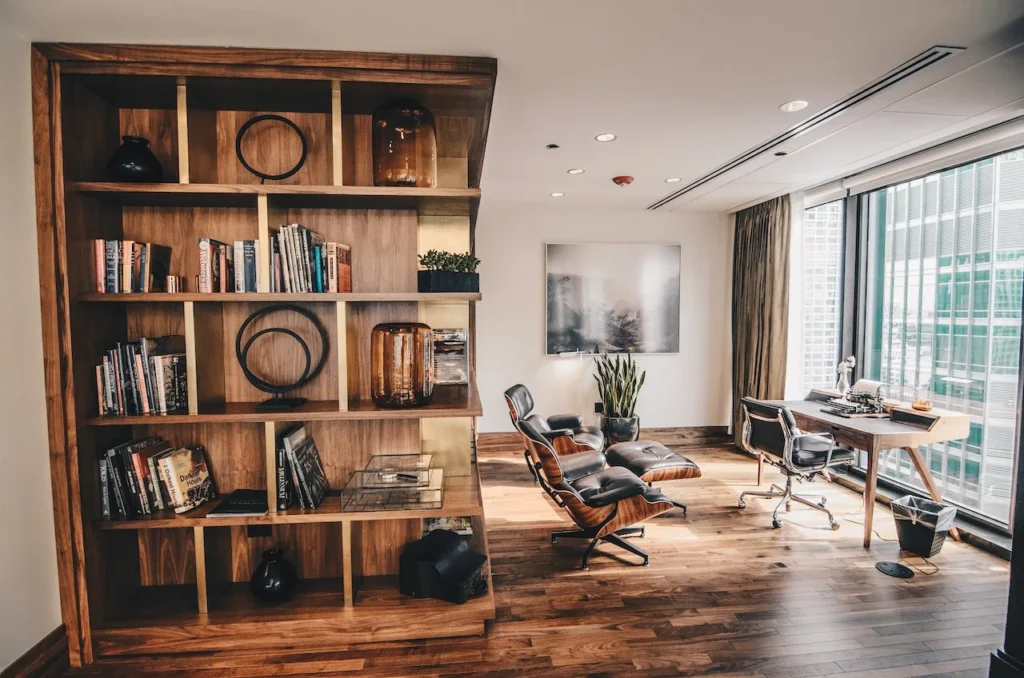Crafting Beauty and Utility: Designing Functional and Aesthetic Pieces Through Furniture Building
by siteadmin

Furniture building is a harmonious blend of form and function, where craftsmanship meets creativity to create pieces that are not only visually stunning but also highly functional. Designing furniture that strikes the perfect balance between aesthetics and utility requires careful consideration of various factors, from materials and construction techniques to ergonomics and space optimization. In this blog post, we’ll explore the art of designing functional and aesthetic pieces through furniture building, uncovering the principles and practices that guide artisans in their quest to create timeless and versatile furniture.
Understanding Design Principles:
Successful furniture design begins with a deep understanding of design principles such as proportion, balance, harmony, and scale. These principles serve as the foundation upon which all design decisions are made, guiding artisans in creating pieces that are visually pleasing and structurally sound. By carefully considering the relationship between form and function, designers can create furniture that not only looks beautiful but also performs its intended purpose with efficiency and grace.
Embracing Ergonomics:
Ergonomics plays a crucial role in furniture design, ensuring that pieces are comfortable, practical, and user-friendly. By considering the human body’s dimensions, movements, and comfort preferences, designers can create furniture that provides optimal support and functionality. Whether designing a chair, table, or storage unit, ergonomics inform decisions regarding seat height, backrest angle, table depth, and drawer placement, among other factors. By prioritizing ergonomics in their designs, artisans create furniture that enhances the user experience and promotes well-being.
Selecting Quality Materials:
The choice of materials is paramount in furniture building, influencing not only the aesthetic appeal but also the durability and longevity of the piece. Whether using solid wood, engineered wood, metal, glass, or upholstery, artisans select materials based on their aesthetic properties, strength, durability, and suitability for the intended application. High-quality materials not only enhance the visual appeal of the furniture but also ensure that it withstands the test of time, providing years of enjoyment and functionality.
Incorporating Functional Features:
Functional design elements are essential for creating furniture that meets the diverse needs and lifestyles of users. From storage solutions and built-in features to modular components and convertible designs, functional features enhance the versatility and usability of furniture pieces. For example, a storage ottoman with a lift-top lid serves as both a comfortable seat and a convenient storage solution, while a modular shelving system allows users to customize the configuration to suit their space and storage needs. By incorporating functional features into their designs, artisans create furniture that adapts to the ever-changing demands of modern living.
Balancing Aesthetics and Utility:
Achieving the perfect balance between aesthetics and utility is the hallmark of exceptional furniture design. While aesthetics are subjective and personal, successful designs resonate with users on an emotional level, evoking feelings of beauty, harmony, and delight. At the same time, furniture must fulfill its intended purpose effectively and efficiently, providing comfort, support, and convenience to users. By striking this delicate balance between form and function, artisans create furniture that not only enhances the visual appeal of a space but also enhances its functionality and usability.
Designing functional and aesthetic pieces through furniture building is an art form that requires a deep understanding of design principles, ergonomics, materials, and functional features. By embracing these principles and practices, artisans create furniture that transcends mere utility, becoming cherished works of art that enrich the lives of those who use them. Whether crafting a simple chair or a complex modular system, the art of furniture building is a testament to the ingenuity, creativity, and craftsmanship of artisans who strive to create beauty and utility in equal measure.
Furniture building is a harmonious blend of form and function, where craftsmanship meets creativity to create pieces that are not only visually stunning but also highly functional. Designing furniture that strikes the perfect balance between aesthetics and utility requires careful consideration of various factors, from materials and construction techniques to ergonomics and space optimization. In…
Recent Posts
- Streamlining Spaces: Enhancing Efficiency in Functionality Through Furniture Junk Removal
- Tranquility Unveiled: Creating Serenity Through Furniture Junk Removal
- From Clutter to Chic: Aesthetics and Design in Furniture Junk Removal
- Perfecting Sound: Audio Configuration and Calibration in Home Theater Installation
- Elevating Entertainment: Achieving Optimal Room Setup and Design for Home Theater Installation
